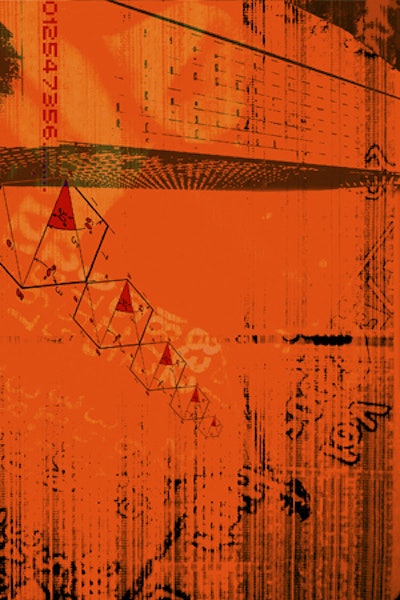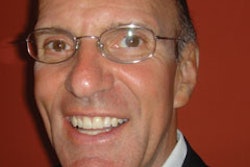
During the past 10 years companies of all sizes have realized substantial savings through applying the principles of third-party relationships and/or strategic sourcing. Strategic sourcing comes in all shapes and sizes, whether an organization subscribes to an incumbent strategy that provides for direct negotiations with the current provider, an aggressive sourcing strategy or a hybrid strategy. However, the principle is the same: Strategic sourcing is a methodology used to assess sourcing requirements across the enterprise while identifying opportunities, both internal and external, for total cost reductions, improved third-party relationships and to create a competitive advantage for the corporation.
There is little debate among sourcing professionals as to the fundamentals of this process. Even so, many would debate the competencies needed and the importance of the role. As cited in A.T. Kearney's Assessment of Excellence in Procurement (AEP), "In order to deliver on goals for value creation, procurement organizations must consistently employ more advanced, non-traditional techniques and talents." (Source: Assessment of Excellence in Procurement. Copyright A.T. Kearney, 2005. All rights reserved. Reprinted with permission.)
The Role
The first obstacle many internal sourcing organizations face is positioning. Although great strides have been made to elevate the sourcing executive to "C-Level" status, a small percentage of service companies have made the leap. Sourcing professionals cannot sit idle and wait for the executive floor to "get it." They must meet that misconception head on and change it.
Simon Croom, executive director, Supply Chain Management Institute at the University of San Diego (USD), describes this new professional as "political entrepreneurs." Croom, who is responsible for the overall direction and advancement of USD's supply chain management program, says, "The sourcing executive must be active. Approximately 50 percent of his or her time should be spent on marketing the sourcing role internally. A clear communication strategy and mechanisms for raising awareness are paramount."
Croom adds that the successful sourcing professional must also be multi-dimensional. Along with the sourcing-related activities, he or she must have the ability to:
- Manage project teams effectively
- Guide the development of strategies relating to decisions concerning sourcing (including "make or buy")
- Lead strategic change in suppliers and be competent in improvement methodologies
- Formulate innovative business strategies incorporating the opportunities available through supply management and building value networks
The professional Croom describes is nothing like most of the professionals who are leading sourcing-related initiatives in many of our organizations today. Companies have blinders on when it comes to the need to "upgrade" their sourcing department's value proposition and the professionals needed to execute this new proposition. These new professionals have not grown up inside the traditional purchasing shops; their backgrounds are diverse, bringing with them technical, analytical, relationship-building, and sales and marketing skills.
The Profile
Does the 21st century sourcing professional have a distinct deoxyribonucleic acid? The answer is, "yes." So, where do we find them? Or, how do we develop them? According to Tariq Hassan, founder and CEO of The Buying Triangle, "The industry as a whole has developed ‘segment players or specialists,' doing excellent work in spend analytics and implementing the sourcing process." These "segment players" according to Hassan, do not possess the ability to lead organizations through the maze of this complex space. "And this is where the disconnect lies," he says.
Linda Tuck Chapman, senior vice president and chief sourcing officer for Fifth Third Corp., Cincinnati, Ohio, maintains that, "An effective sourcing professional must possess a deep understanding of business drivers and strategies, and how third-party relationships enable their success. Gone are the days of three quotes and you're done."
Tuck Chapman goes on to say: "The 21st century sourcing professional must blend sourcing technical competence — deal structuring, negotiating and innovation — with the skills of a trusted advisor. Active listening is the first step toward sourcing excellence." Tuck Chapman's philosophy is right on target, like the old saying, "God gave us two ears and one mouth for a reason."
In Stephen R. Covey's book, 7 Habits of Highly Effective People, the fifth habit is "Seek First to Understand, Then to Be Understood." According to Covey, "Habit 5 is powerful because it is right in the middle of your circle of influence." Covey adds: "You always seek first to understand. That is something within your control. As you do this, watch what happens to your circle of influence. Because you really listen, you become influenceable." In order to understand the drivers of our internal business partners, we must be clear on their expected end results. (Source: 7 Habits of Highly Effective People, 1989. Simon & Schuster.)
For the mature sourcing organization, the days of "banking savings" from the low-hanging fruit are gone; these activities are now considered tactical. Leading companies are looking to the sourcing organization to assist in the execution and on-going management of complex business process outsourcing relationships, as well as to provide guidance with revenue-generating ventures. The traditional buyer is not equipped to play this role or create this type of value.
The DNA
So what is the magical DNA of this professional? Now that we understand the role of this valued professional, let's start with the foundation. In the past, the minimum profile would have included being a good manager of status quo and having a working knowledge of the process. Although a plus, being skilled in sourcing concepts is not enough.
Lisa Earp, senior manager, Infrastructure Management Services, for Nike, looks for strong business consulting skills in the sourcing professionals with which she works. According to Earp, who organizationally resides in IT: "The members of our sourcing teams consist of subject matter experts from the lines of business, internal business consultants, sourcing and legal — at a minimum. Although 95 percent of my background is in sourcing, I am not a part of that organization. My focus is on IT supplier management and performance." Earp, who has been at Nike since 1997, concludes: "Nike is a marketing company. Everything we do is with the consumer in mind. Our ability to provide customers with a valuable product is directly tied to how well we manage our supplier relationships. Organizations are being very narrow-minded if they isolate high-level sourcing expertise just to procurement."
As at Nike, these competencies must not be viewed as a commodity, but as a strategic advantage to an organization. The key difference between the traditional procurement associate of the past and the sourcing professional of the future is his or her innate ability to manage relationships and look beyond the single event of a sourcing initiative and manage to the business.
The Drivers
One does not have to look far to understand the business drivers for America's largest organizations. Shareholders are sending a clear message to CEOs: We want strong returns and continued growth in the value of the company. In order to meet this request forward-thinking organizations are embracing this new sourcing professional. The stakes are higher, but the return will also be greater. As reported in A.T. Kearney's AEP survey, "Organizations that have distinguished themselves as leaders in the procurement discipline have exceeded their industry average net income margin in each of the past five years by an average of 59 percent — highlighting the importance of procurement excellence." (Source: "Assessment of Excellence in Procurement." Copyright A.T. Kearney, 2005. All rights reserved. Reprinted with permission.)
The Complete Package
There is a shift occurring in the industry. Ten years ago organizations were clueless when asked how many suppliers they had, much less how much they spent with those suppliers. Today, more and more companies understand the strategic, competitive nature of this kind of information. And as corporate America continues to focus investment dollars on ways of generating revenue, they cannot be blind to the value of this new professional.
The Buying Triangle's Hassan concludes there are six must-have competencies of this valued professional:
- Proven leadership track record in initiating change and challenging the status quo
- Intellectually curious and willing to embrace diverse opinions
- Ability to communicate and sell change
- Risk taker who is not afraid to be held accountable for his/her actions and views
- Desire and ability to demand better information
- Passion for success
Eventually the executive floor will "get it." These highly skilled professionals will work their way to the board room and become empowered to make the changes needed to provide a crop of bottom-line improvements that have been sitting there just waiting for harvest.










